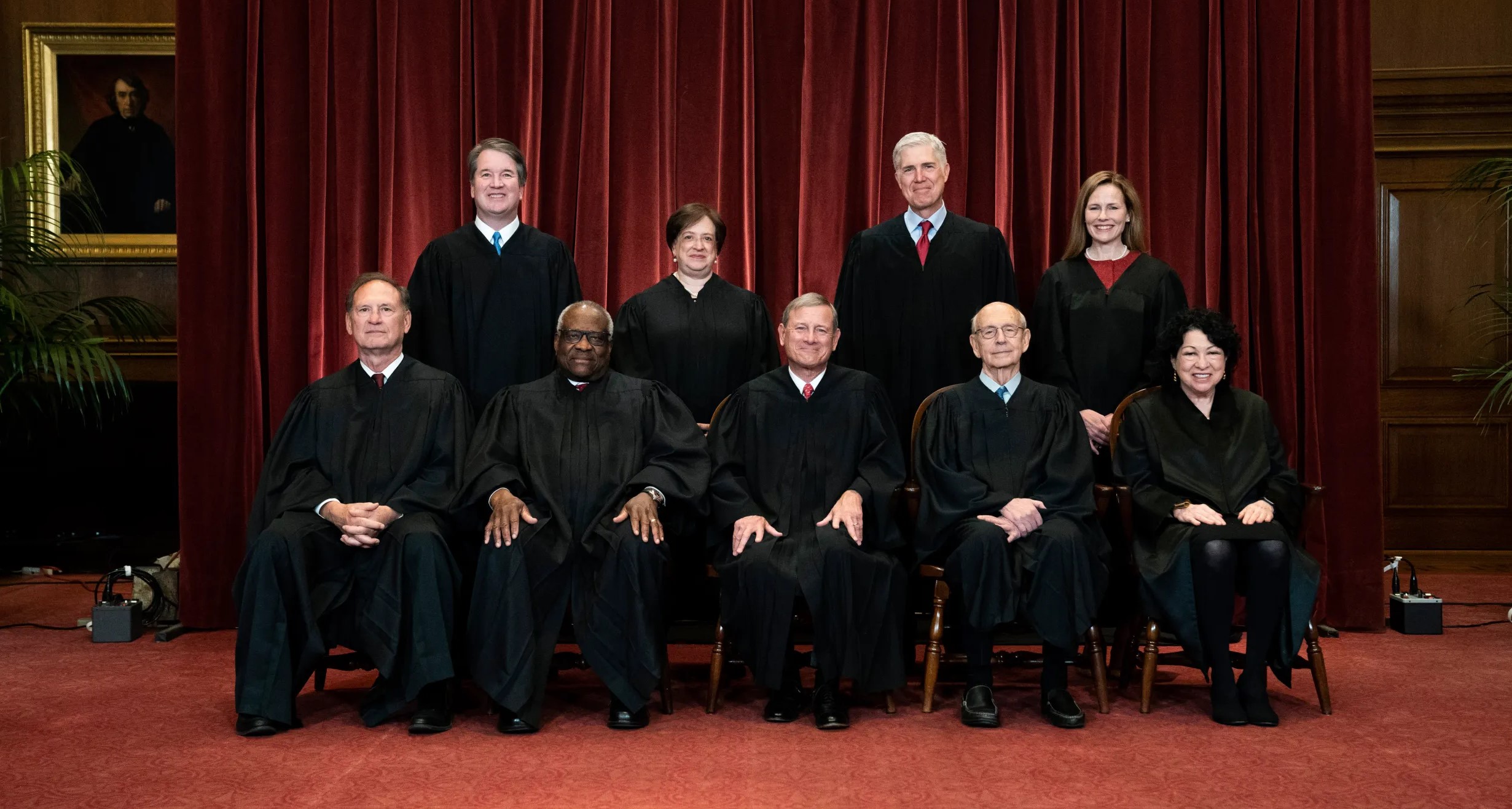Supreme Court Upholds Presidential Authority Over Federal Personnel Changes
High Court ruling clears path for extensive federal workforce restructuring while establishing key precedent on executive powers
Key Ruling Overview
The Supreme Court has issued a decisive ruling that strengthens presidential authority over federal personnel decisions, effectively clearing the way for large-scale government restructuring efforts. The unsigned order reversed a lower court injunction that had blocked implementation of an executive order calling for significant reductions across multiple federal agencies.
This ruling represents a significant victory for executive branch authority while establishing important precedent regarding the separation of powers and presidential control over federal workforce management.
The Executive Order at Issue
The February 13 executive order that triggered this legal battle outlined plans for “large-scale reductions in force” across numerous federal departments, including Agriculture, Energy, Labor, Interior, Treasury, State, Veterans Affairs, and the Environmental Protection Agency.
Scope of Proposed Changes:
- Comprehensive review of federal workforce efficiency
- Elimination of redundant positions and overlapping functions
- Streamlining of bureaucratic processes
- Cost reduction measures across major agencies
The administration characterized these changes as necessary reforms to address what officials described as decades of bureaucratic expansion that had created inefficiencies and redundancies throughout the federal government.
Lower Court Intervention
The legal challenge originated with U.S. District Judge Susan Illston in Northern California, who issued a preliminary injunction blocking implementation of the executive order. Judge Illston’s ruling raised concerns about the scope and legality of the proposed personnel changes.
The district court’s intervention reflected broader tensions between the executive and judicial branches over the appropriate limits of presidential authority in federal workforce management. Critics argued that the lower court had overstepped its bounds by interfering with legitimate executive branch operations.
Supreme Court’s Response
The Supreme Court’s decision to grant a stay was notably swift and decisive, with the justices determining that the government was “likely to succeed on its argument that the Executive Order and Memorandum are lawful.”
Key Aspects of the Ruling:
- Unsigned order indicating broad agreement among justices
- Emphasis on executive branch authority over personnel decisions
- Recognition of constitutional separation of powers principles
- Rejection of lower court’s interference with executive operations
The Court’s language suggested strong confidence in the legal foundation supporting the executive order, providing crucial validation for the administration’s restructuring efforts.
Bipartisan Judicial Support
Perhaps most significantly, the ruling attracted support from across the ideological spectrum of the Court. Even Justice Sonia Sotomayor, typically aligned with the Court’s liberal wing, joined the majority in granting the stay.
Justice Sotomayor’s concurrence emphasized procedural considerations, noting that the decision “leaves the District Court free to consider those questions in the first instance.” Her participation in the majority demonstrated that constitutional principles regarding executive authority transcended partisan considerations.
Only Dissent: Justice Ketanji Brown Jackson was the sole dissenter, expressing concerns about potential “mass employee terminations” and the “dismantling of much of the Federal Government.” Her dissent reflected broader policy disagreements about the scope of federal government operations.
Constitutional Framework
The Supreme Court’s ruling rests on established constitutional principles regarding executive branch authority. Article II of the Constitution grants the president broad power over executive branch operations, including personnel management and organizational structure.
Legal Precedents Supporting Executive Authority:
- Historical presidential reorganization efforts
- Constitutional separation of powers doctrine
- Executive branch personnel management traditions
- Presidential responsibility for efficient government operations
Legal experts noted that the Court’s decision aligns with longstanding precedent recognizing presidential authority over federal workforce management, while rejecting attempts to expand judicial oversight into executive branch operations.
Government Efficiency Oversight
The restructuring effort operates under guidance from efficiency experts who have conducted comprehensive reviews of federal operations. This analytical approach aims to ensure that personnel reductions target genuinely redundant positions rather than essential government functions.
Reform Methodology:
- Evidence-based analysis of agency operations
- Identification of duplicative programs and functions
- Assessment of bureaucratic inefficiencies
- Targeted elimination of waste while preserving core capabilities
The involvement of efficiency specialists provides professional oversight designed to minimize disruption to essential government services while achieving cost savings and operational improvements.
Opposition and Support
Critics’ Concerns:
- Potential disruption of essential government services
- Impact on federal workforce morale and retention
- Questions about the scope of executive authority
- Concerns about political motivations behind restructuring
Supporters’ Arguments:
- Constitutional validation of executive authority
- Need for government efficiency improvements
- Taxpayer benefits from reduced bureaucratic costs
- Elimination of redundant and wasteful positions
Labor unions and progressive advocacy groups have opposed the restructuring efforts, arguing that large-scale personnel reductions could harm government service delivery. Supporters counter that eliminating inefficiencies will improve rather than degrade government performance.
Agency-Specific Impacts
The restructuring effort targets systematic inefficiencies across major federal departments:
Agriculture Department: Addressing duplicative programs and regulatory conflicts that impact farmers and rural communities.
Energy Department: Eliminating regulatory redundancies while maintaining essential safety and oversight functions.
Labor Department: Reducing bureaucratic barriers to employment and workforce development.
EPA: Streamlining environmental oversight while preserving core regulatory capabilities.
Each department faces tailored reforms designed to improve efficiency while maintaining essential public services.
Legal and Political Implications
The Supreme Court’s ruling establishes several important precedents:
Constitutional Law: Strengthens executive authority over federal personnel decisions and clarifies appropriate limits of judicial intervention in executive branch operations.
Government Operations: Provides legal foundation for comprehensive civil service reforms and efficiency improvements.
Separation of Powers: Reinforces constitutional boundaries between executive and judicial authority in personnel matters.
Future Administrations: Creates precedent that future presidents can cite when implementing workforce restructuring efforts.
Implementation Timeline
With the Supreme Court’s legal validation, implementation of the restructuring effort can proceed according to the administration’s planned timeline. Key phases include:
- Immediate implementation of previously blocked personnel changes
- Continued analysis and identification of efficiency opportunities
- Phased reduction of redundant positions across agencies
- Ongoing monitoring and adjustment of reform efforts
The Court’s decision removes the primary legal obstacle to comprehensive implementation while deterring additional judicial challenges.
Looking Forward
The Supreme Court’s endorsement of executive restructuring authority represents a significant development in both constitutional law and practical government operations. The ruling provides crucial legal foundation for the most ambitious federal workforce restructuring effort in decades.
Success will ultimately be measured by whether the reforms achieve their stated objectives of improving government efficiency while maintaining essential services. The legal validation from the nation’s highest court creates optimal conditions for implementation while establishing important precedent for future reform efforts.
Bottom Line: The Supreme Court’s decision strengthens presidential authority over federal personnel decisions while clearing the path for extensive government restructuring. This ruling establishes important constitutional precedent regarding executive powers while enabling comprehensive efficiency reforms across the federal bureaucracy.
The implementation and effectiveness of these reforms will continue to be closely monitored by both supporters and critics as the administration moves forward with its restructuring agenda under the protection of Supreme Court precedent.

Ethan Blake is a skilled Creative Content Specialist with a talent for crafting engaging and thought-provoking narratives. With a strong background in storytelling and digital content creation, Ethan brings a unique perspective to his role at TheArchivists, where he curates and produces captivating content for a global audience.
Ethan holds a degree in Communications from Zurich University, where he developed his expertise in storytelling, media strategy, and audience engagement. Known for his ability to blend creativity with analytical precision, he excels at creating content that not only entertains but also connects deeply with readers.
At TheArchivists, Ethan specializes in uncovering compelling stories that reflect a wide range of human experiences. His work is celebrated for its authenticity, creativity, and ability to spark meaningful conversations, earning him recognition among peers and readers alike.
Passionate about the art of storytelling, Ethan enjoys exploring themes of culture, history, and personal growth, aiming to inspire and inform with every piece he creates. Dedicated to making a lasting impact, Ethan continues to push boundaries in the ever-evolving world of digital content.
